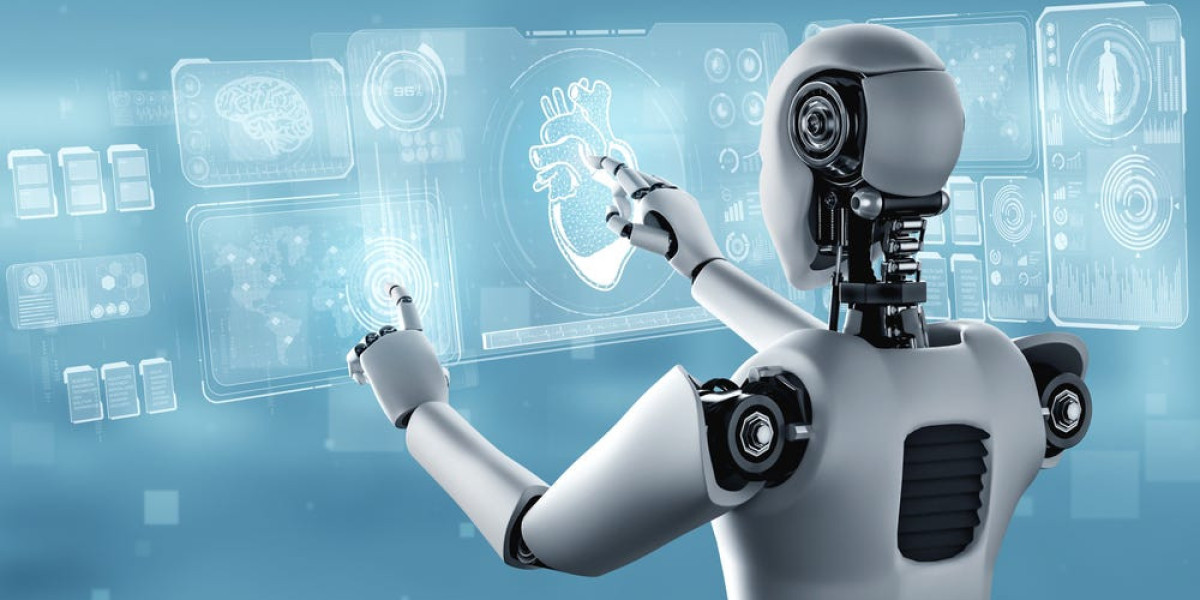Introduction
In today’s digital era, Artificial Intelligence (AI) is transforming the way we create, communicate, and consume information. With the rise of AI writing tools like ChatGPT, Bard, and Jasper, it has become easier than ever to produce written content within seconds. However, this advancement has also raised a serious question — how do we identify what is written by humans and what is generated by AI?
What is an AI Detector?
An AI Detector is a specialized software or online tool that scans written content to identify if it has been generated using artificial intelligence. The detector uses complex algorithms and linguistic analysis to differentiate between human writing patterns and machine-generated text.
AI Detectors are based on Natural Language Processing (NLP) and Machine Learning (ML) techniques. They analyze aspects such as word frequency, sentence structure, predictability, and tone consistency. Because AI-generated content often follows specific statistical patterns, detectors can identify it by spotting these repetitive or unnatural features.
What is a KI Detector?
The term “KI Detector” comes from the German word “Künstliche Intelligenz (KI)”, which translates to “Artificial Intelligence” in English. Therefore, a KI Detector serves the same purpose as an AI Detector but is often used in European or German-speaking regions.
KI Detectors are designed with similar technology but may also integrate multilingual detection capabilities, allowing them to analyze text written in German, English, French, and other languages. This global version of AI detection helps international organizations maintain transparency and verify content authenticity across languages and regions.
How Do AI and KI Detectors Work?
Both AI and KI detectors use machine learning models trained on large datasets of human-written and AI-generated content. These models learn to recognize subtle linguistic differences between the two.
Here’s a simplified breakdown of how they function:
Text Input: The user pastes or uploads the text they want to analyze.
Linguistic Analysis: The detector studies grammar, syntax, vocabulary diversity, and coherence.
Perplexity Measurement: It calculates how predictable the text is. AI tools often produce highly predictable text compared to humans.
Burstiness Check: Human writers tend to use varied sentence lengths and styles. AI detectors measure this “burstiness” to distinguish human writing.
Probability Score: Finally, the tool generates a score showing how likely the text is AI-generated (e.g., “85% AI-generated” or “100% human-written”).
This scientific process enables users to evaluate the authenticity of written content with remarkable accuracy.
Importance of AI and KI Detectors
The role of AI and KI detectors has grown immensely in recent years. Here are a few major reasons why they are becoming essential:
1. Academic Integrity
Students increasingly use AI tools to complete assignments and essays. Educators rely on AI detectors to ensure that academic submissions are authentic and not entirely machine-generated.
2. Content Authenticity in Media
News platforms and online publishers use AI detectors to verify that articles, reviews, and reports are written by real people, maintaining credibility and trust.
3. SEO and Marketing
Search engines like Google prioritize original and high-quality content. Marketers and bloggers use AI detection tools to ensure their work isn’t flagged as AI-generated, which could affect rankings.
4. Corporate and Legal Usage
Businesses and law firms often use AI detectors to authenticate professional documents, ensuring they are crafted by humans and not automated systems.
5. Prevention of Misinformation
AI can generate fake news or misleading information at scale. AI and KI detectors help in identifying such content, protecting society from digital misinformation.
Popular AI and KI Detectors
Several reliable AI and KI detection tools are available today, offering varying levels of precision and usability. Some of the most popular ones include:
GPTZero – Designed specifically to detect content produced by GPT-based models like ChatGPT.
Copyleaks AI Detector – Used by educators and publishers for multi-language AI detection.
Turnitin AI Detection – A trusted academic tool that integrates AI content recognition with plagiarism checking.
Writer.com Detector – A professional-grade detector for marketing and business communication.
Sapling AI Detector – Ideal for verifying customer support and professional writing.
These detectors provide a probability-based analysis, making them valuable tools for ensuring human originality in text.
Limitations of AI and KI Detectors
While AI and KI detectors are highly advanced, they are not flawless. There are several challenges these tools face:
False Positives: Sometimes, human-written text can be mistakenly flagged as AI-generated due to structured or formal writing.
Evolving AI Models: As AI writing tools improve, they produce text that closely mimics human style, making detection harder.
Language Limitations: Some detectors are less effective for non-English or mixed-language texts.
Dependence on Training Data: Accuracy depends on the data used to train the detector. Poor training data can lead to inaccurate results.
Thus, while AI and KI detectors are valuable, they should be used as supporting tools, not absolute proof of authorship.
How to Make Your Writing Pass AI Detection
If you are a genuine writer, you can follow these tips to make your writing appear more human and natural — even if you use AI assistance for drafting:
Add Personal Insights: Include unique thoughts, experiences, or emotions that AI cannot replicate.
Use Varied Sentence Structures: Avoid repetitive patterns; mix long and short sentences.
Include Imperfections: Minor grammatical variations or human-like phrasing often appear more authentic.
Edit AI Output: Always rewrite or edit AI-generated content to include your own voice and tone.
Add Citations and References: Human writers tend to reference real sources; AI content often lacks credible citations.
By following these steps, writers can maintain authenticity and creativity in their work.
The Future of AI and KI Detection
As AI technology evolves, so will AI and KI detectors. Future versions will likely use deep learning, semantic understanding, and contextual reasoning to detect even the most advanced AI-generated text.
We may also see real-time AI detection built directly into search engines, publishing platforms, and educational portals. These advancements will ensure greater transparency and authenticity in the digital world.
Conclusion
AI and KI detectors are becoming indispensable tools in an age dominated by artificial intelligence. They help protect originality, maintain academic honesty, and ensure that human creativity remains at the center of communication.
While AI-generated content can be useful, it is the human touch — emotion, experience, and perspective — that truly makes writing meaningful. Therefore, as we move into the future, the combined use of AI tools and reliable detectors will help us create a balanced digital ecosystem where technology supports, but never replaces, human intelligence.
For more information.








